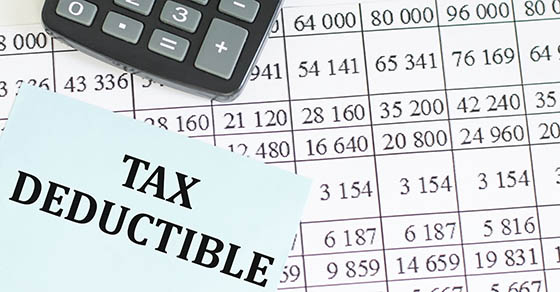In the midst of holiday parties and shopping for gifts, don’t forget to consider steps to cut the 2023 tax liability for your business. You still have time to take advantage of a few opportunities.
Time deductions and income
If your business operates on a cash basis, you can significantly affect your amount of taxable income by accelerating your deductions into 2023 and deferring income into 2024 (assuming you expect to be taxed at the same or a lower rate next year).
For example, you could put recurring expenses normally paid early in the year on your credit card before January 1 — that way, you can claim the deduction for 2023 even though you don’t pay the credit card bill until 2024. In certain circumstances, you also can prepay some expenses, such as rent or insurance and claim them in 2023.
As for deferring income, wait until close to year-end to send out invoices to customers with reliable payment histories. Accrual-basis businesses can take a similar approach, holding off on the delivery of goods and services until next year.
Buy assets
If you’re thinking about purchasing new or used equipment, machinery or office equipment in the new year, it might be time to act now. Buy the assets and place them in service by December 31, and you can deduct 80% of the cost as bonus depreciation in 2023. This is down from 100% for 2022 and it will drop to 60% for assets placed in service in 2024. Contact us for details on the 80% bonus depreciation break and exactly what types of assets qualify.
Bonus depreciation is also available for certain building improvements.
Fortunately, the first-year Section 179 depreciation deduction will allow many small and medium-sized businesses to write off the entire cost of some or all of their 2023 asset additions on this year’s federal income tax return. There may also be state tax benefits.
However, keep in mind there are limitations on the deduction. For tax years beginning in 2023, the maximum Sec. 179 deduction is $1.16 million and a phaseout rule kicks in if you put more than $2.89 million of qualifying assets into service in the year.
Purchase a heavy vehicle
The 80% bonus depreciation deduction may have a major tax-saving impact on first-year depreciation deductions for new or used heavy vehicles used over 50% for business. That’s because heavy SUVs, pickups and vans are treated for federal income tax purposes as transportation equipment. In turn, that means they qualify for 100% bonus depreciation.
Specifically, 100% bonus depreciation is available when the SUV, pickup or van has a manufacturer’s gross vehicle weight rating above 6,000 pounds. You can verify a vehicle’s weight by looking at the manufacturer’s label, which is usually found on the inside edge of the driver’s side door. If you’re considering buying an eligible vehicle, placing one in service before year end could deliver a significant write-off on this year’s return.
Think through tax-saving strategies
Keep in mind that some of these tactics could adversely impact other aspects of your tax liability, such as the qualified business income deduction. Contact us to make the most of your tax planning opportunities.











